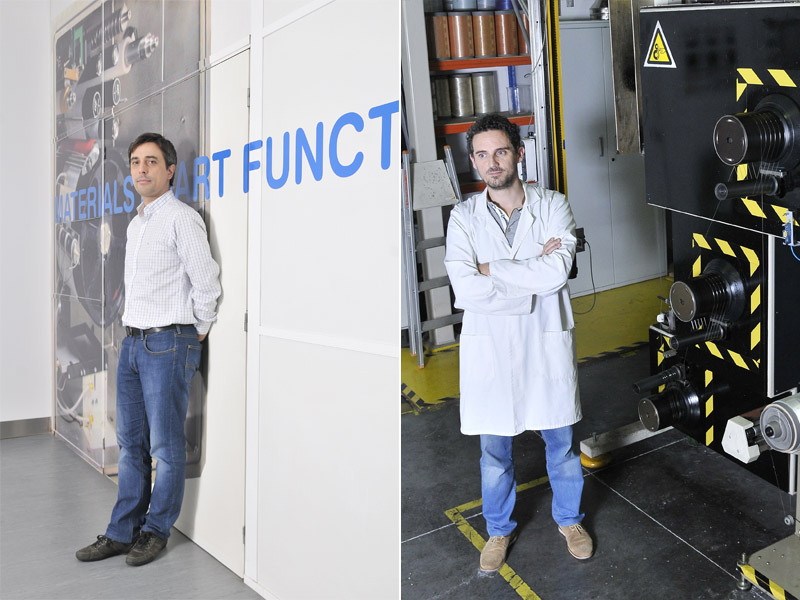
1D-NEON envisions television on threads
The European 1D-Neon project, which has the know-how of CeNTI researchers and the involvement of Philips and LG giants, is studying the incorporation of electronic devices into textile yarns, opening the doors to the television screen of the future whether woven or knitted.
The incorporation of electronics in textiles is no longer an absolute novelty, but working on this integration in the very thread makes the European project 1D-Neon revolutionary.
'What is currently being done is the integration of the devices themselves into the textile industry. That is, we have an LED already made previously and we will pick it up and nail it in the textile itself. What you are trying to do here is that the LED itself is fiber. Then we'll pick up on that fiber and do weaving and knitting processes and our device will be the textile itself and not the textile with the devices attached to it, "he summarized in the Jornal Têxtil, Nélson Durães, head of the team of fibers and polymers of CeNTI, in an article published in the October issue.
Despite the apparent simplicity of the explanation, the process of arriving at this result is anything but easy.
The project, one of many in which CeNTI is involved (see Innovation "made in" CeNTI ), is funded by European funds amounting to 9.1 million euros and developed by 14 international partners - including the electronics giants Philips and LG -, implying the development of five electronic devices in the form of wire.
"Let's suppose you want to make a television, in this case a TFT, which is what is intended here, but in the form of a curtain. The screen is a textile. For the screen we need a transistor, electrodes, LED's, sensors and power. So let's make these five devices in the form of a thread and then we'll pick up these five threads and try to get them all together in a textile structure, "the researcher explained to Jornal Têxtil.
In the case of the electrode, a stretchable, polymeric electrode - unlike what is commonly used, metal base - is being developed, flexible and with low electrical resistance, which will have the function of transporting energy and making the electrical connections between the different devices.
Teamwork
"Next we have a transistor - they are developments that are being made by the New University of Lisbon. What currently exists in this area is the planar scale, that is, we are talking about developments in the form of films and sheets. What we are trying to do is to transpose these developments from this scale to the coaxial scale, that is, we will try to develop filaments that are transistors, "revealed Nélson Durães.
The LED's are being worked by Philips and Henkel in order to be miniaturized to the nano scale and transformed into fiber and the storage of energy in supercapacitors is in the hands of CeNTI.
"They are in practice batteries, but they accumulate less energy and are faster to release energy in a single moment," explained the director of operations of CeNTI, João Gomes. "What we are going to do is the internal structure of the fiber, let us provide the conductive structure - in practice this is a structure that has a central fiber and the others grow around them, as concentric. We'll deal with the fiber in the middle, "he said. CeNTI will also develop the conductive wires, with the structure to be in the hands of other partners.
Multiple applications
Although the television screen is the most immediate application of the project, which lasts for four years, until March 31, 2020, the investigation can take the results to other areas. "We have the five functionalities that it is necessary to give to the final textile, but it can be a television as can be any other device. Or even pick up each of these devices and couple them for different functionalities, "said Nélson Durães. "To make textile structures that are actually screens or that generate energy through vibration of the sensors or that can even work in terms of flexible structures for tactile sensors", added João Gomes.
If they are successful, as they believe, the results can revolutionize the way the screens will be produced in the future. "When we look at these final devices and we can think that it is possible to obtain a textile with these characteristics, as is the case of this curtain, in which it is possible to have image, light and the same characteristics of a conventional textile curtain, if we can join these two worlds, will be a huge thing in terms of commercial impact, "concluded Nélson Durães.

